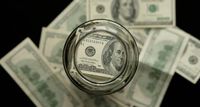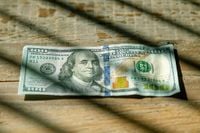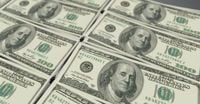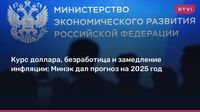The Ministry of Economic Development has unveiled its forecast for Russia's socio-economic landscape in 2025, revealing a mixed bag of expectations that reflect both stability and challenges ahead. According to reports from RIA Novosti and RTVI, the ministry's predictions encompass various economic indicators, including the dollar exchange rate, unemployment, GDP growth, and inflation rates.
One of the most significant aspects of the forecast is the anticipated dollar exchange rate. The Ministry projects that by the end of 2025, the dollar will be valued at 98.7 rubles. This figure aligns with previous predictions made in September 2024. However, the ministry has revised its average annual dollar exchange rate forecast for 2025, decreasing it from 96.5 rubles to 94.3 rubles. Officials from the ministry emphasized that this updated assessment is realistic, although they acknowledged that fluctuations in the exchange rate could be substantial. "We consider this estimate realistic, but we understand that the volatility of the exchange rate can be quite high," they stated.
The labor market is another focal point in the ministry's forecast. While the unemployment rate is expected to remain stable at 2.5% per year, real disposable income is projected to decline from 8.4% to 6.2% in 2025. Similarly, real wages are also anticipated to drop from 9.1% to 6.8%. By 2028, these figures are expected to stabilize at 3.1% and 3.2%, respectively. A representative from the ministry described the unemployment rate as "sufficiently low" and noted a decrease in the urgent need for additional personnel, although the number of job vacancies remains high.
On the economic growth front, the Ministry of Economic Development has maintained its GDP growth forecast for 2025 at 2.5%. This projection is based on long-term trends, although it is a reduction from the previous year's growth of 4.3%. The ministry has also lowered its growth expectations for 2026 from 2.6% to 2.4%. These adjustments are linked to the effects of strict monetary policies and credit conditions that are expected to extend into the following year. For 2027 and 2028, the ministry estimates economic growth will reach 2.8% and 3%, respectively.
Economic experts have weighed in on the ministry's outlook, with some expressing skepticism. Oleg Buklemishev, director of the Center for Economic Policy Research at Moscow State University, described the ministry's expectations as "optimistic." He pointed out that the economy appears to be split into two sectors: one that is growing rapidly due to government spending and another that is stagnating. "The growth factors that existed until now have essentially been exhausted," he concluded.
In contrast, economist Sergey Dubinin highlighted the increasing uncertainty regarding global trends, noting that the ministry's decision to retain its forecast for 2025 is understandable. He referenced China's economic situation, where despite a trade war with the United States, the country is still projecting over five percent growth.
Inflation also remains a critical concern in the ministry's forecast. The consumer price index is expected to rise to 7.6% annually by December 2025, a significant increase from the previously anticipated 4.5%. "We assess inflation at 7.6% based on the accumulated dynamics from the end of last year and the beginning of this year. This figure is roughly in the middle of the range proposed by the Bank of Russia, which is between 7% and 8%. We agree with them, but there are different scenarios that could unfold," the ministry representative explained.
Trade forecasts paint a mixed picture as well. The ministry expects imports to grow significantly, projecting that by 2026, imports will reach $348.2 billion, an increase from the previous forecast of $342.6 billion. This upward trend is expected to continue, with imports estimated at $365.1 billion in 2027 and $379.8 billion in 2028. Conversely, the export forecast for the current year has been lowered from $321.9 billion to $323.8 billion. For 2026, the export forecast remains stable at $455.8 billion, while projections for 2027 and 2028 have been adjusted upwards to $490.3 billion and $525.1 billion, respectively.
The dollar's performance has been particularly volatile in recent months. After surging past the 100 ruble mark in November 2024, reaching a peak of 114.5 rubles, the dollar's value began to decline following negotiations between Russia and the United States in February 2025. By mid-March, the exchange rate had dropped to 80.98 rubles.
In summary, the Ministry of Economic Development's forecast for Russia's socio-economic development in 2025 presents a complex picture of stability amid significant challenges. While the ministry maintains a cautious optimism regarding GDP growth and employment levels, the anticipated declines in real income and wages, coupled with rising inflation, underscore the hurdles that lie ahead for the Russian economy. As the global economic landscape continues to shift, stakeholders will be closely monitoring these developments to navigate the uncertain waters of the coming years.







